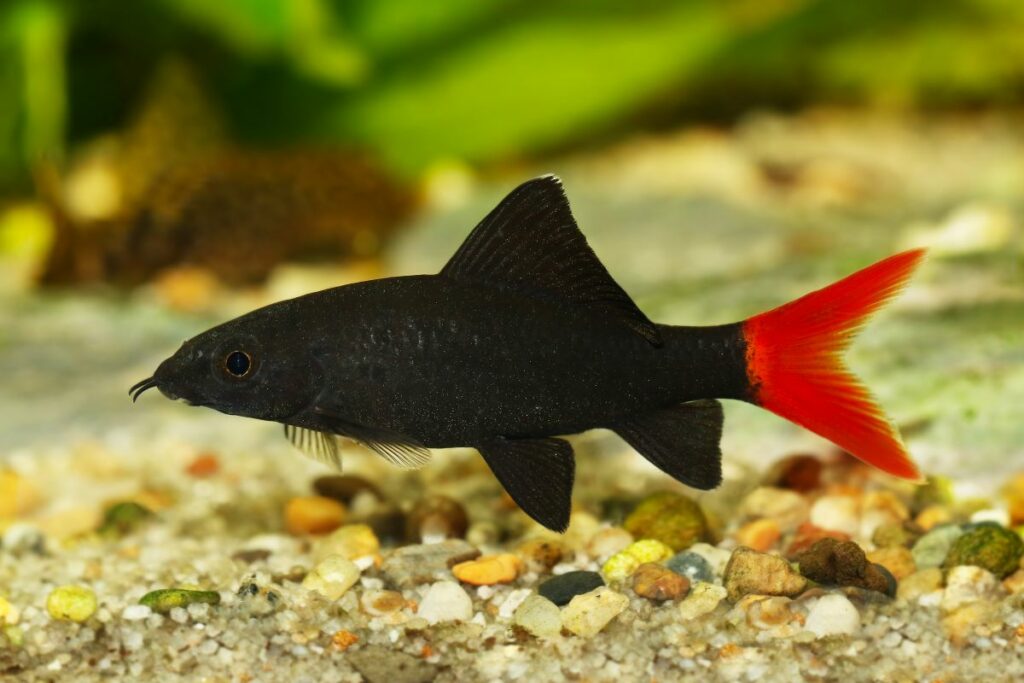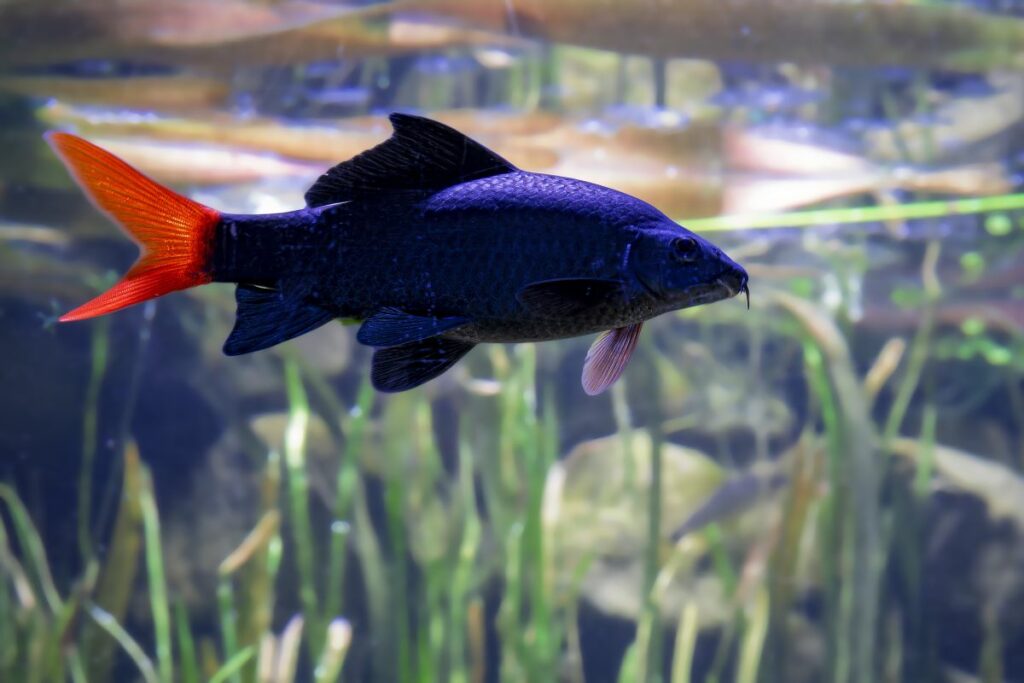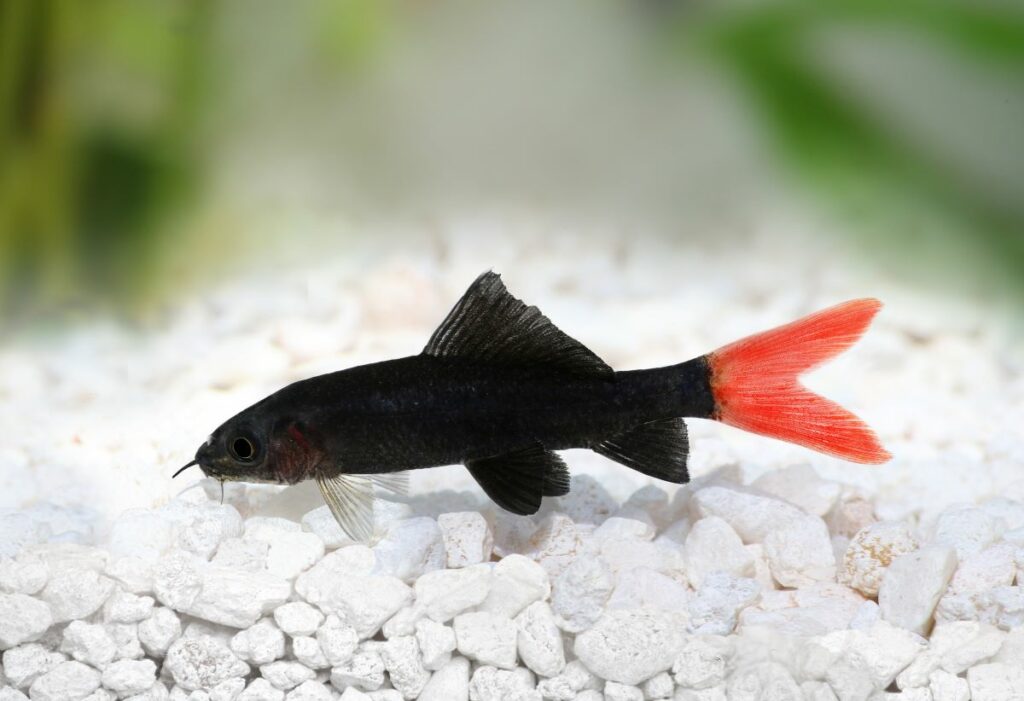the essentials in brief
The firetail fish, also known as lionfish or red lionfish, is not particularly compatible with other fish species in a reef aquarium due to its aggressive behavior. Learn more about the reasons here.
The firetail fish is a predator and feeds primarily on small fish and crustaceans. You can find out more about this here.
In some Asian countries like Japan and China, firetail fish is valued as a delicacy and used in cooking. You can find more meanings here.
There is one hidden in the depths of the sea fascinating creaturethat never fails to draw attention due to its unique abilities and striking appearance: the Firetail Fish.
This mysterious sea creature isn't just for his spectacular appearance and its remarkable ability to camouflage, but also for its impressive survival strategies and its role in different cultures worldwide.
Who is the Firetail Fish?

The firetail fish, scientifically known as "Pterois," is a genus of marine fish found primarily in the warm waters of the Indo-Pacific is based.
This fish is for his striking appearance and its long, venomous spines that stretch down its back. In addition to being used for defense, these spines are an essential feature in identifying the different species within the genus Pterois.
camouflage and hunting strategy
One of the most impressive characteristics of the firetail fish is its camouflage ability. These fish have distinctive stripes and patterns on their bodies that help them blend in perfectly in their natural habitat, the coral reefs. They use this camouflage to sneak up on prey and strike by surprise.
The Firetail Fish is a sophisticated hunter, which is mainly nocturnal. During darkness, it will leave its hiding place and look for smaller fish, crustaceans and other prey. With a lightning-fast dash, it grabs its prey and devours it with its razor-sharp teeth.
The poisonous spines: defense and warning signal
The long, venomous spines on the back of the firetail fish are one effective defense against potential enemies. When the fish feels threatened, it raises its spines, presenting a deterrent image.
Attention: The venom contained in these spines can cause severe pain, swelling, and in rare cases even serious health problems in humans.
The Firetail Fish's vibrant colors and patterns also serve as a Warning signal for predators and other predators that it is poisonous and should be avoided. This phenomenon, in which brightly colored animals are venomous or pretend to be venomous, is called "aposematism" and is widespread in the animal world.
Cultural significance and protected status

The fire tail fish not only has an important role in the Coral reef ecology, but also in different cultures. In some regions, particularly parts of Asia, the firetail fish is prized as a delicacy and used in cooking.
Attention: This has led to overfishing in some areas, posing a threat to populations of these fascinating fish.
Because of these concerns, many countries have precautions enacted for the Firetail Fish to maintain its stocks. It's important to promote sustainable fishing practices and protect the unique coral reef wildlife that includes the firetail fish.
Firetail fish have one in various cultures multiple symbolic and culinary meanings. Here are some examples:
- Culinary importance in Asia: In some Asian countries like Japan and China, firetail fish is valued as a delicacy and used in cooking. They are often fried, roasted or grilled and are considered a special treat.
- Medicinal use: In some Asian cultures, certain parts of the firetail fish are believed to have healing properties. These can be used in traditional Chinese medicine and other alternative healing methods.
- Symbolic meaning: In some cultures, the firetail fish represents various symbolic aspects. For example, it can symbolize strength, courage, and independence due to its fearsome appearance and poisonous sting.
- Spiritual meaning: In some coastal communities and among sea peoples, firetail fish hold spiritual significance. They can be considered guardian spirits or symbols of connection to the ocean and nature.
- Aquarium and Art: Because of their striking appearance, firetail fish are also often kept in aquarium hobby and are popular subjects in arts and crafts, both in their natural colors and in creative displays.
Additional information: Some cultures consider them a threat to the environment and other fish species due to their venomous nature and aggressive behavior.
Aquarium keeping with other fish
Also known as the lionfish or lionfish, the firetail fish is popular because of its aggressive behavior and venomous spines not particularly compatible with other fish species in a reef aquarium.
Note: As a rule, it should be kept in its own aquarium to avoid conflicts with other fish.
Here are some reasons why firetail fish don't mix well with other fish species:
- aggressive behavior: Firetail fish are territorial and aggressive. They defend their territory and can attack, injure or even kill other fish that come near them.
- Poisonous spikes: The venomous spines on the back of the firetail fish not only serve as a defense against predators, but can also injure other fish that get too close.
- forage competition: Firetail fish are predators and feed on smaller fish and crustaceans. When kept together with other species of fish, they can compete for food and interfere with feeding other fish.
- Coral Reef Destruction: Firetail fish can also eat coral and invertebrates, making them a threat to the reef aquarium.
However, if you are interested in keeping firetail fish in a community aquarium, you should do so below strict observation and in a sufficiently large aquarium with plenty of hiding places for other fish species.
Note, however, that this no guaranteed solution is because the aggressive behavior of the firetail fish can always lead to problems.
Diet of the Firetail Fish
The Firetail Fish is a predator and feeds mainly on small fish and crustaceans. These fish are nocturnal, which means that they mainly forage when it is dark.
- Small fish: Firetail fish prey on small fish that live in their vicinity. Using their stealth, they sneak up on their prey before locking in and devouring them in a lightning-fast dash.
- crustaceans: In addition to small fish, firetail fish also eat various types of crustaceans, including shrimp and crabs. They are skilled hunters, using their venomous spines to paralyze or kill prey.
- nighttoadfish: Some species of firetail fish have specialized in hunting toadfish. These toadfish are nocturnal fish that live in rock crevices and coral reefs. Firetail fish use their camouflage to approach these prey unnoticed.
- Other invertebrates: In addition to fish and crustaceans, firetail fish also eat other invertebrates such as echinoderms (e.g. sea urchins) and molluscs.
Note: If kept in an aquarium, their diet should be mimicked by offering them live or frozen prey items.
The special fire tail fish
The firetail fish is undoubtedly one of the most amazing creatures of the seas. From its camouflage to its hunting strategies to its venomous spines, this fish has many fascinating properties.
In addition, the firetail fish is not only a fascinating research object, but also an important part of the ecosystems in the coral reefs of the Indo-Pacific. Its cultural importance and protected status demonstrate the need to conserve and protect our marine environment sustainable practices to promote.



